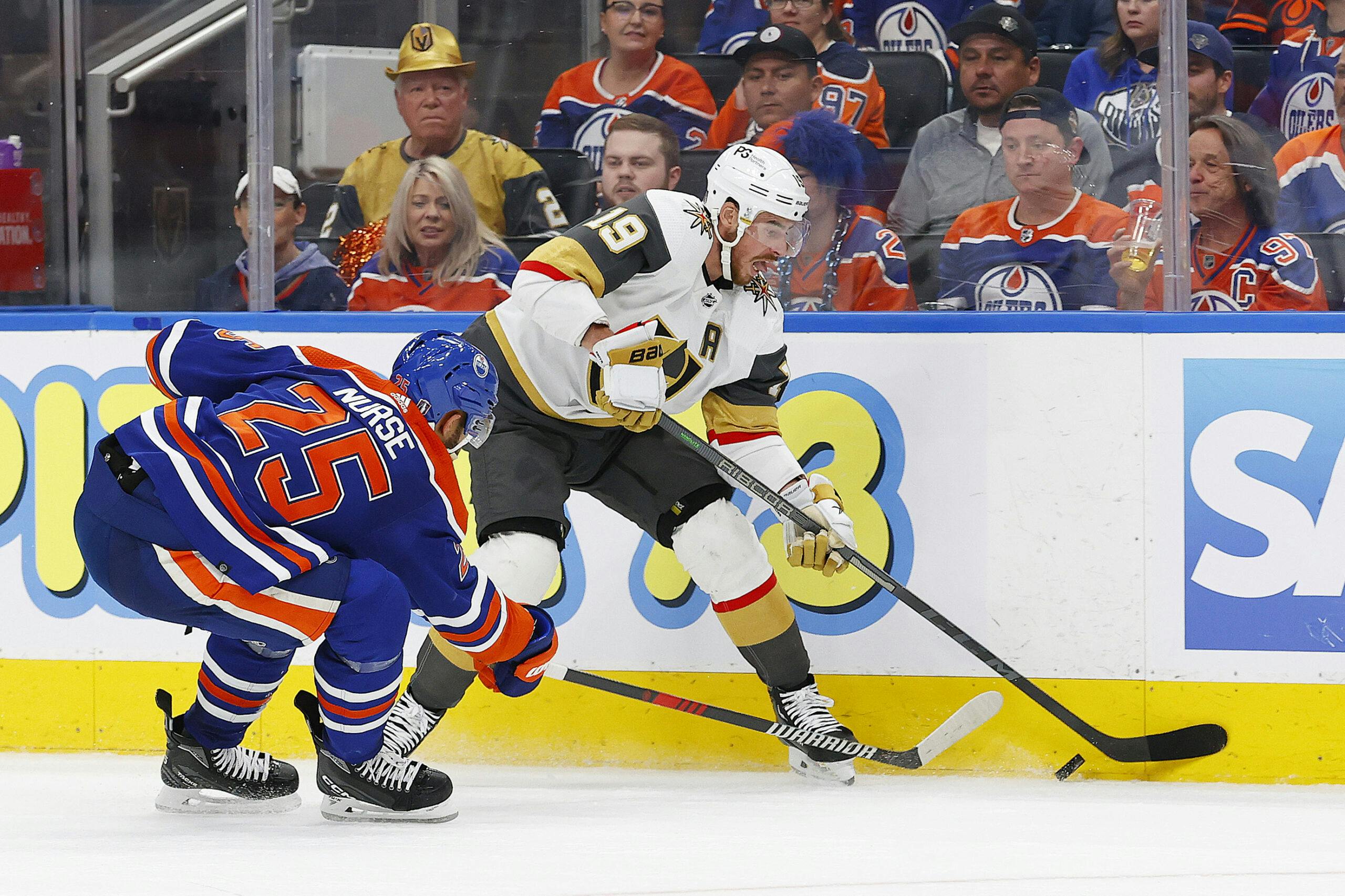One area that the Edmonton Oilers will hopefully improve upon in the upcoming season is the penalty kill, which finished 21st in the league last season allowing 8.52 goals per hour.
These results on the penalty kill were driven by two main factors:
- They had issues preventing chances, as they allowed the ninth-highest rate of shots against in the league (58.31) and the eleventh-highest rate of unblocked shot attempts against (79.22).
- Their goaltending struggled at times, posting a save percentage of 85.39% – which ranked 20th in the league.
What’s important to note is that the penalty kill results (goals against per hour) did gradually improve over the course of the season, and well before the trade deadline.
It was really in their first twenty-five games of the season (up until December 3, 2022) where the penalty kill was atrocious and wiping away everything that their powerplay was contributing to the team. During this stretch, the powerplay scored 25 net goals – a rate of 11.99 goals per hour that ranked second-best in the league. Unfortunately, the Oilers penalty kill allowed 26 net goals during this stretch, and the fourth-highest rate of goals against (12.60 per hour). The Oilers special teams were basically a non-factor even though the powerplay featured two of the best players in the world and was generating one of the highest rates of goals in the league. The penalty kill really wasted away a lot of talent, effort and money.
But from that period onwards, the Oilers penalty kill saw their rate of goals against gradually decline, at one point posting a goals-against rate around 6.00, basically half of what they were initially allowing, and similar to what some of the best penalty-killing teams finished the season with. The graph below shows the Oilers rate of goals against over 25-game rolling periods. The blue line across represents the league average rate in the season. The vertical blue line represents when the trade deadline occurred.
The top penalty-killing teams like Boston, Carolina, Dallas and New Jersey were very successful last season largely because of their tactical and player deployment, which helped minimize the rate of shots and chances their goaltenders faced. All four clubs ranked highly when it came to unblocked shot attempts (i.e., Fenwick) and actual shots on goal against. The table below lists the top seven penalty-killing teams from last season, sorted by their goals against per hour. Included in the table is each team’s rate of unblocked shot attempts and shots on goals against, along with their league-wide ranking.
The Oilers penalty kills results were well below these teams largely because of their higher rate of shots and chances against. But again, they did gradually improve over the course of the season. They started off very poorly allowing some of the highest rates in the league but did manage to hover around league-average levels from about the half-way point of the season onwards.
Another way to look at the Oilers improvement on the penalty kill is by splitting the season in half, and comparing the metrics that measure process (i.e., unblocked shot attempts/Fenwick and shots against), as well as the metrics that measure actual results (i.e., goals against per hour).
In the first half of the 2022/23 regular season, the Oilers penalty kill ranked poorly in terms of process and results. They were allowing some of the highest rates of shots and chances against, the goaltending was poor, and the goals-against rate was ninth highest in the league.
But in the second half, they moved closer to the league average, seeing their rate of shots against drop by 18.0%, which helped their rate of goals against drop by 31.4%. Goaltending also improved slightly, as Stuart Skinner played more of the games and the team in front of him did a better job limiting shots and chances against.
Heading into an important year, it’s critical that the Oilers penalty kill doesn’t cost them any wins like it did in the first twenty-five games of last season. The second-half results were driven by better tactics and defensive play by the skaters, and the team should be able to replicate those numbers. The only question mark should be around goaltending, which we can’t always predict. But if Skinner and Campbell can perform even at league-average levels, the Oilers penalty kill should be in a better spot.
Data: Natural Stat Trick

